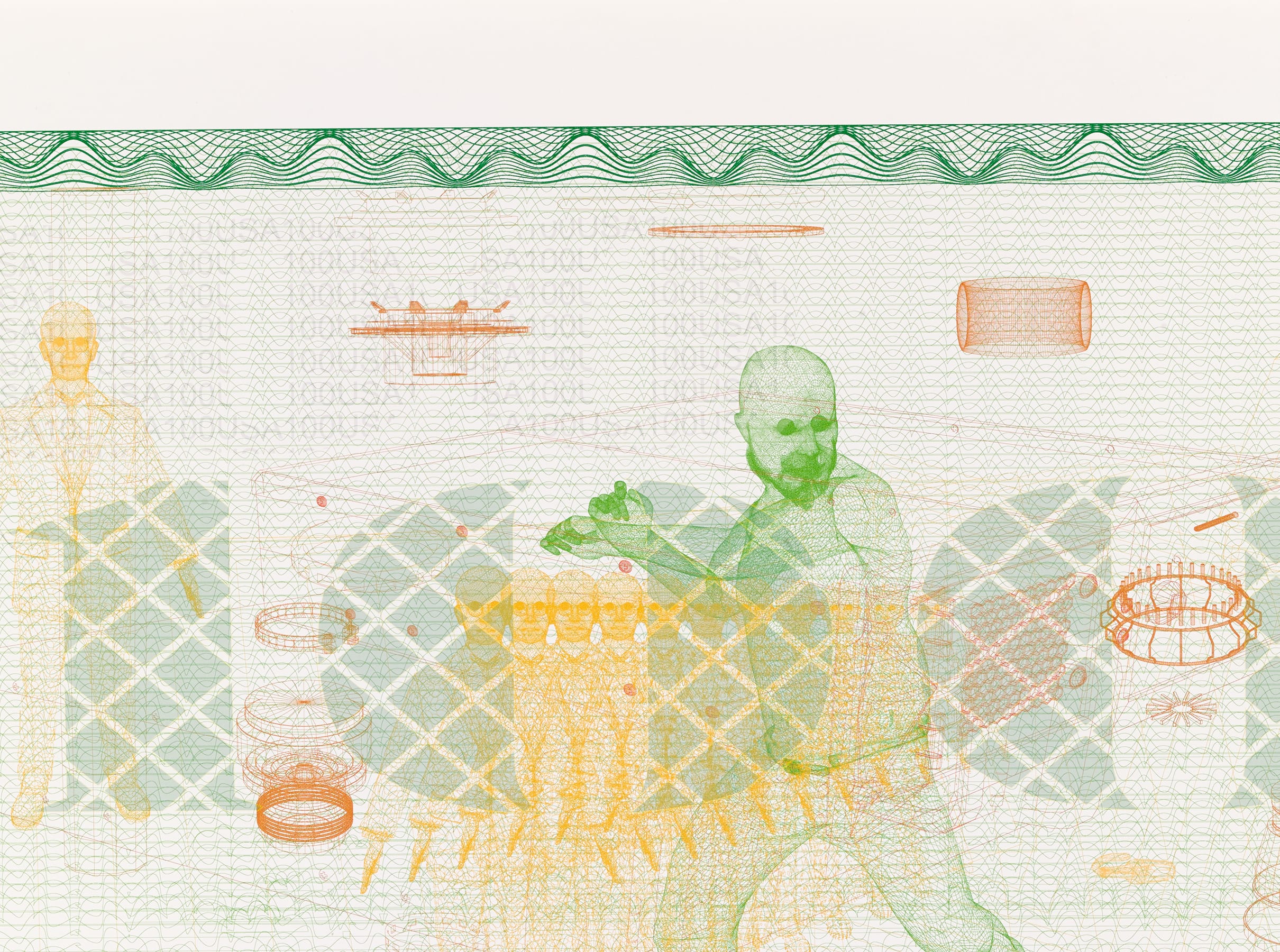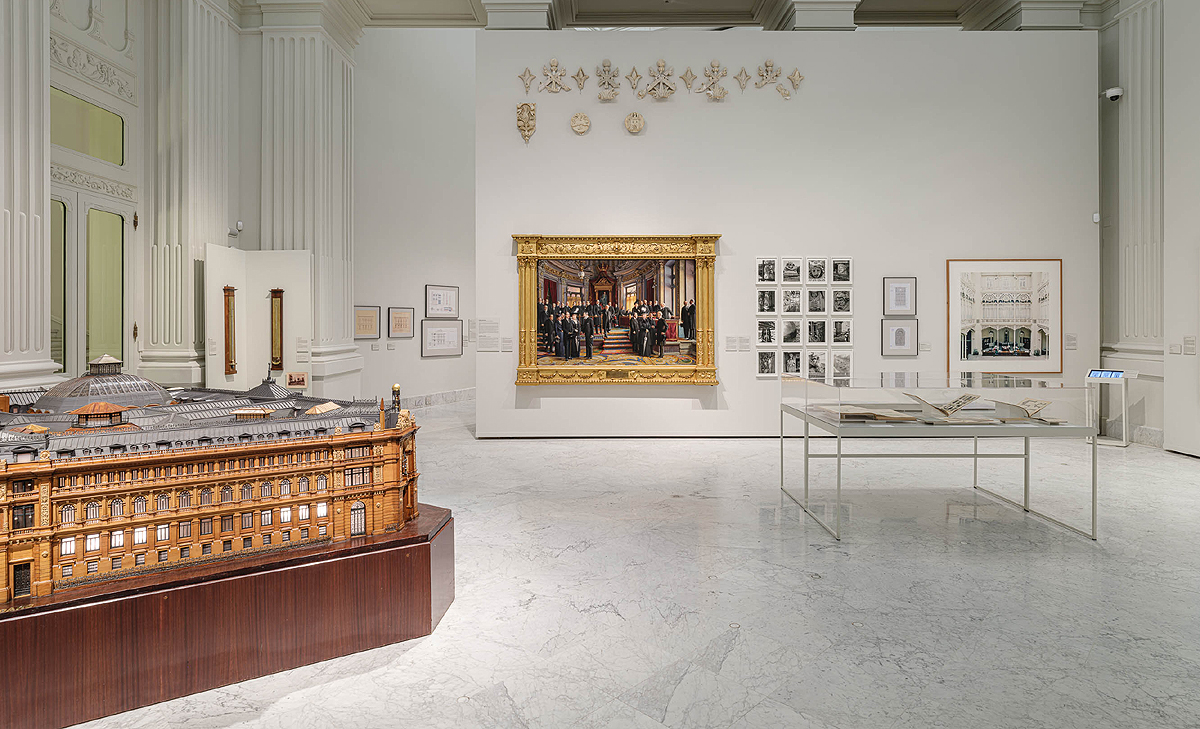
Eduardo de Adaro, the main designer of the Banco de España headquarters building and one of the late 19th century's leading architects, is remembered in an exhibition and a book
Header image credit: Banco de España Exhibition Hall. Exhibition The Architecture of Eduardo de Adaro and the Banco de España. A Changing World. Banco de España/Juan Carlos Quindós
From 24 October 2023 to 24 February 2024 the exhibition hall at the Banco de España is to stage The Architecture of Eduardo de Adaro and the Banco de España. A Changing World. The exhibition includes a number of documents, objects and art works that bear witness to Eduardo Adaro's advanced approach to architecture (blending mansion-house and industrial styles, technology and craftsmanship, the functional and the educational, tradition and innovation), as well as bringing part of the bank's artistic and documentary heritage to the attention of the public.
The works featured range from paintings by Joaquín Sorolla and Carlos Luis de Ribera to decorative pieces and technological items of various kinds. They include a selection of photos from the early years of documentary photography in the late 19th century and others by contemporary photographers who have helped renovate the genre.
The works and objects on show are organised into five thematic sections: 'Origins of the new Banco de España building', 'Security', 'The Money Palace', 'The Versatility of an Architect: Other Projects by Eduardo de Adaro' and 'Epilogue'. Most of the objects are from the Historical Archives of the Banco de España Collection, though a significant minority are on loan from various private collections and public institutions including the National Science and Technology Museum,![]() the Cerralbo Museum
the Cerralbo Museum![]() , the Madrid City Archives
, the Madrid City Archives![]() , the Royal Academy of Fine Arts of San Fernando
, the Royal Academy of Fine Arts of San Fernando![]() , the History Museum of Madrid
, the History Museum of Madrid![]() and the General Military Archives of Segovia
and the General Military Archives of Segovia![]() .
.
The exhibition is open from 11:00 am to 2:00 pm and from 4:00 to 8:00 pm from Tuesday to Saturday. Please book in advance via the following . Guided tours are available, as are audio-guides in Spanish and English.
The opening of the exhibition also coincides with the publication of Eduardo Adaro. Arquitecto del Banco de España ['Eduardo Adaro: Architect of the Banco de España'], a monographic study of Adaro's work by researcher and History of Art professor Esperanza Guillén. This publication![]() is available as a free download via our website, as is the catalogue/brochure
is available as a free download via our website, as is the catalogue/brochure![]() published for the exhibition. The documentary Eduardo de Adaro (1848-1906)
published for the exhibition. The documentary Eduardo de Adaro (1848-1906)![]() , produced by Tatiana Poggi and Joaquín García Vicente of ESPECIE Arquitectura to mark the exhibition, is also available on the Banco de España YouTube channel.
, produced by Tatiana Poggi and Joaquín García Vicente of ESPECIE Arquitectura to mark the exhibition, is also available on the Banco de España YouTube channel.
Eduardo de Adaro: the Man
The central headquarters of the Banco de España, located on Madrid's iconic Plaza de Cibeles square, dates from the late 19th century. It is one of the finest examples of 19th century eclectic Spanish architecture. In 1999 it became a listed Historical Monument and Site of Cultural Interest.
The main architect behind the project was Eduardo de Adaro Magro (b. Madrid, 6 February 1848 - d. Madrid, 27 February 1906). His creativity, expertise in the latest technical and construction-related innovations of his day and familiarity with banking operations enabled him to design a project that was unique in the banking sector. He applied the same style not just at the various branch office of the Banco de España but also at other banks such as the head offices of the Banco Hispano Americano on the square now called Plaza de Canalejas in Madrid.
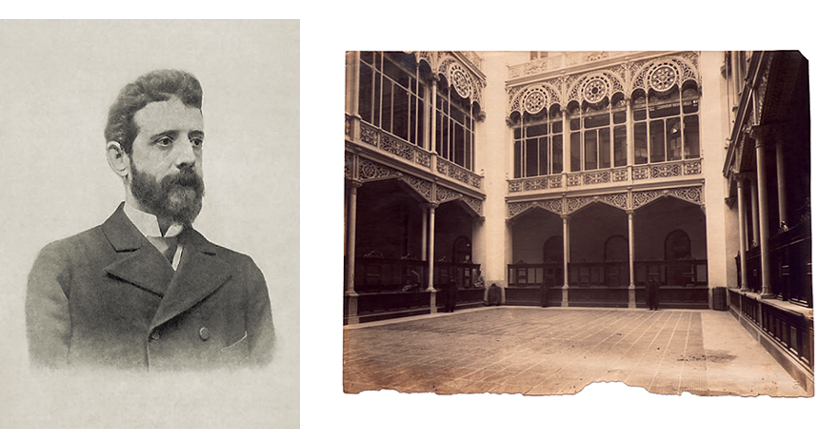
Edgardo Debas. Photo portrait of Eduardo de Adaro. Arquitectura y construcción [Architecture and Construction], March 1906. Spanish National Library | J. Laurent y Cía. Trading Floor Banco de España, 1891 Positive print by Juana Roig (1915-1921?). Historical Archives of the Banco de España, Photography Collection
Seeking to reinstate and showcase Adaro's legacy, the Banco de España is staging an exhibition dedicated to him and publishing an accompanying study to highlight how modern his design was and how he sought to incorporate the latest technical advances and sanitary appliances, making aspects such as heating systems, lifts, telephones, electric lighting and safety prime concerns. Over and above his interest in producing a careful, richly ornamented architectural design, Adaro was a real professional who kept abreast of the problems and debates of his day and saw functionality as a basic aspect of his work.
The exhibition examines the link between his design for the Banco de España headquarters at Plaza de Cibeles (the most outstanding of his career and a project for which he received much praise and various awards at the time) with some of his less well-known designs, some of them never built and others that no longer survive, in a wide range of architectural areas such as prisons, industrial facilities, religious buildings, housing and funereal monuments. Architecture is always a collective business, so the exhibition also looks at the key role placed in the execution of his projects by the masonry, stucco and stonework, decorative sculpture and ironwork specialists who worked under his orders, and at the companies that supplied and installed the equipment needed for his buildings to work properly.
Monographic Study. Eduardo de Adaro. Architect of the Banco de España
The Architecture of Eduardo de Adaro and the Banco de España. A Changing World is the next step in a long-term project begun by the bank in 2019 in an effort to rescue Adaro from obscurity. In that context, researcher and Art History professor Esperanza Guillén, who is curating the exhibition jointly with Yolanda Romero, has written a monographic study under the title Eduardo Adaro. Arquitecto del Banco de España [Eduardo Adaro. Architect of the Banco de España], which is to be published to coincide with the opening of the exhibition. This study is not just an in-depth biography covering the life and career of Adaro as an architect but also an aid in understanding key areas of the Spanish economy and of society at the turn of the 20th century, when the country was undergoing profound changes.
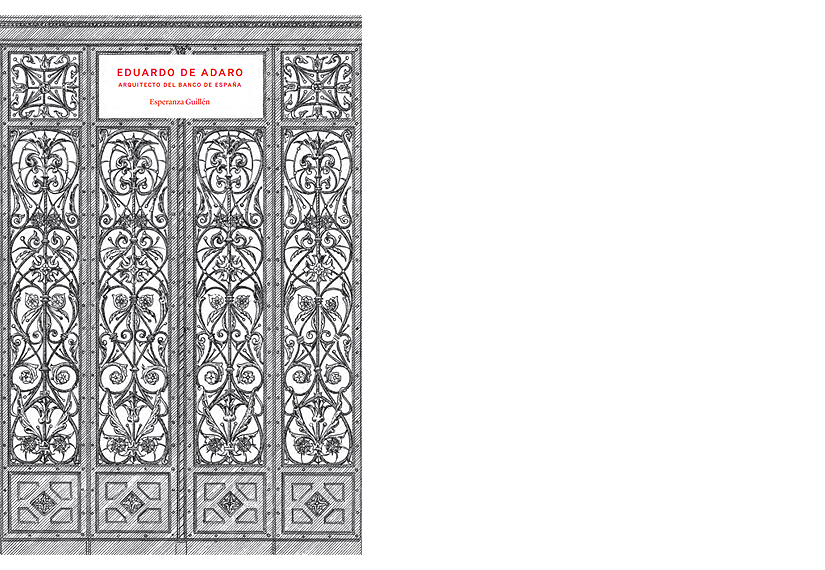
Cover of the book Eduardo de Adaro. Arquitecto del Banco de España, by Esperanza Guillen
The findings of Prof. Guillén's research are valuable in tracing the internal history of the project to build the bank's central headquarters. They range from records of accidents on the site during the building work to a breakdown of the types of sanitary facilities installed (depending on the rank of their intended users). She has also unearthed previously unknown original sketches of the symbolist-style stained glass windows produced by Mayer of Munich and what is now the earliest known photo of the building under construction.
This long-term effort to rescue Adaro's name has also included commissioning Manolo Laguillo, one of the leading exponents of the revival of architectural and urban photography in Spain, to produce a series of photos showcasing the architect's oeuvre. From its earliest days, the Banco de España has been involved in commissioning art in this way as a form of patronage. The end result in this case is Adaro: un estudio de caso [Adaro: case study], which comprises over 300 pictures innovatively grouped into six monumental contact sheets, covering the architect’s designs throughout Spain.

Manolo Laguillo. Adaro: un estudio de caso [Adaro: case study], 2021. Giclée (pigmented inks on archival-quality pH-neutral paper). Commissioned in 2021. Banco de España Collection
Exhibition Content
The exhibition features the series of photos taken by Laguillo plus a selection of photos from other shoots of Adaro's building held in the bank's archives, ranging from the pictures taken by Jean Laurent et Cie. in the 1880s and 1890s (in the form of prints produced by Mallorca-based photographer Juana Roig) to those taken a century later by Javier Campano, Jorge Ribalta and Candida Höfer, among others. A time-line can thus be traced from the beginnings of documentary photography in Spain in the late 19th century to the work of the contemporary photographers who have revived the genre.
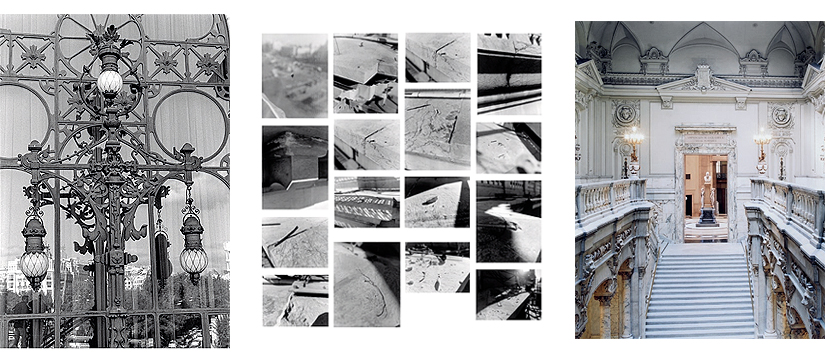
Javier Campano. Iron bracket with arc lamps on the corner façade of the Banco de España building. From the serie Edificio Banco de España, 2000-2001 [The Banco de España building, 2000-2001] | Jorge Ribalta. Restauración [Restoration], 2017. Banco de España Collection | Candida Höfer. Escalera del Banco de España. Banco de España Madrid III 2000 [Banco de España Staircase Banco de España, Madrid III 2000], 2000. Banco de España Collection
Along with these photos, the exhibition includes sketches, drawings and decorative items, including two of the stained-glass panels by Mayer, which have been dismantled and reassembled especially for the occasion. There are also various functional and technological devices ranging from the innovative arc lamps installed on the building on Plaza de Cibeles when it was first constructed to an elegant Victorian lavatory designed by Doulton (with which the architect aspired to equal the modern conveniences being installed in new buildings elsewhere in Europe). Also on show are safe deposit boxes, electric bells, early telephones, long-case thermometers and barometers and even one of the multiple-rod lightning conductors initially installed on the building.
The exhibition also features a number of paintings from the Banco de España Collection, and more specifically from the gallery of official portraits, which provides an almost uninterrupted record of the history of the bank from its founding in 1782 as the Banco de San Carlos to the present day. They include Joaquín Sorolla's portrait of engineer, politician and writer José de Echegaray, during whose mandate as Treasury Minster the Banco de España was granted a monopoly on the issuing of bank-notes, which turned it into the country's leading financial institution. There are also paintings by two more leading 19th century artists: Carlos Luis de Ribera and Asterio Mañanós.

Joaquín Sorolla. Retrato de José Echegaray [Portrait of José Echegaray] (1905) Oil on canvas. Colección Banco de España | Carlos Luis de Ribera y Fieve. Alfonso XII, 1875. Oil on canvas. Banco de España Collection
Through its analysis of the figure of Eduardo de Adaro and his iconic work as an architect, the exhibition not only gives visitors details of his valuable legacy but also provides information on a fundamental episode in the history of the Banco de España. It opens up part of the bank's artistic and documentary history to the public and explores the challenges and transformations that Spain underwent in the late 19th and early 20th centuries.
